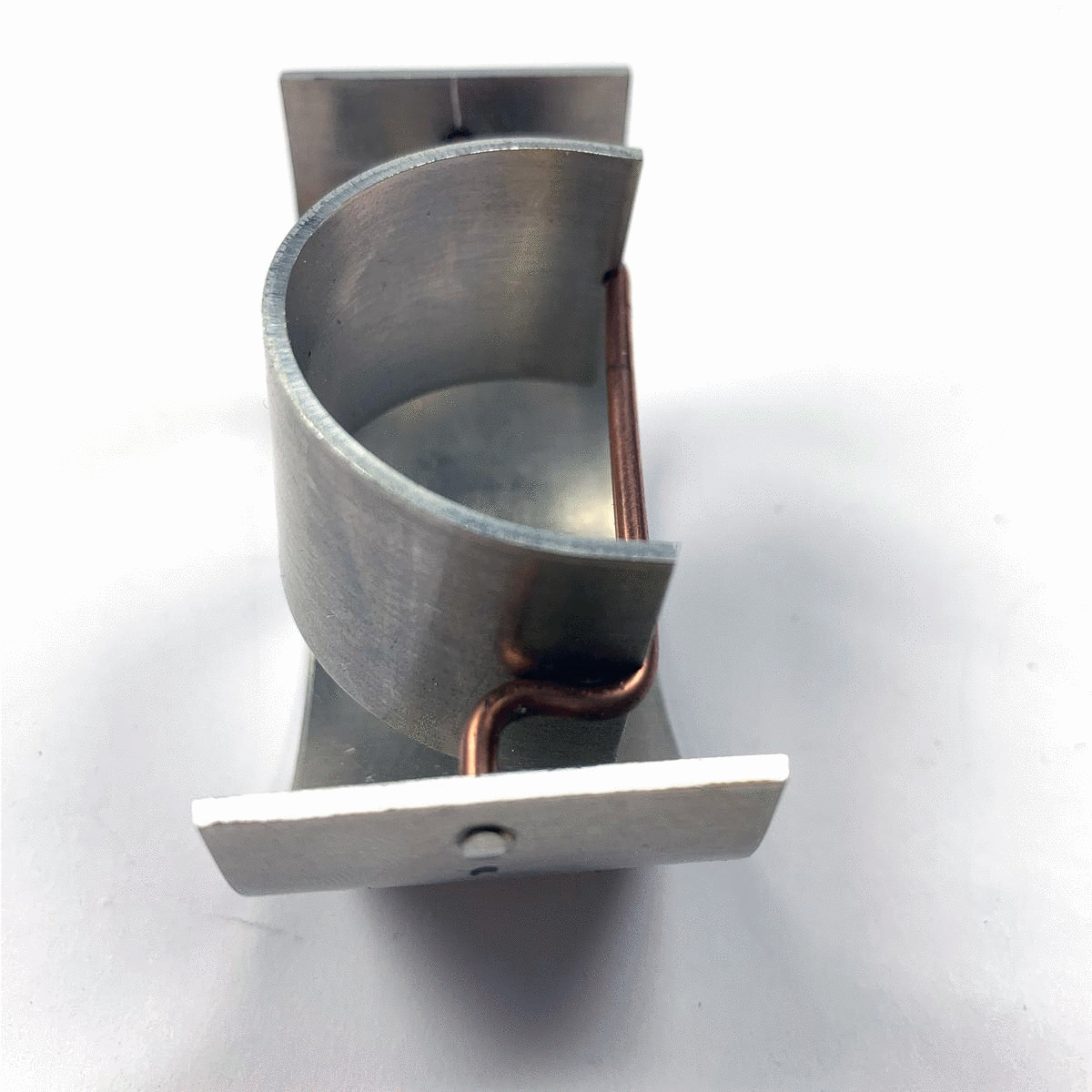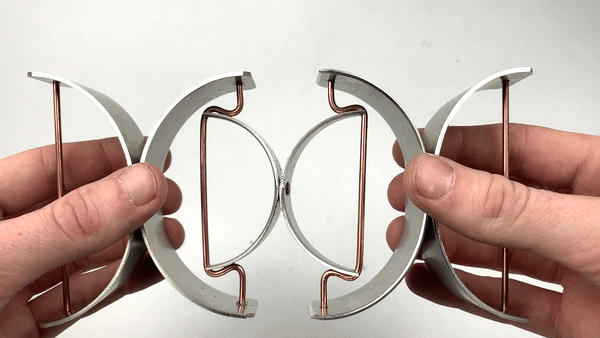Aluminum Sheet Metal Exploration
Phase I:
Exploration of aluminum sheet metal, discovering what it can do and its material properties. In these initial studies I aimed to work with a variety of techniques to identify the direction I wanted to continue. A simple experimentation of tension to hold a semicircle of aluminum using copper plated steel rod was the most compelling piece that I wanted to pursue.
Phase II:
Investigation into how the copper plated rod could connect and reinforced the aluminum. The first few studies failed to demonstrate the tension that was being contained, especially the helix example. This led me to explore more pared down versions of tension and compression that demonstrated my vision more effectively. Finally, I found a form that could show the forces held in the piece while being elegant and airy.
Phase III:
Refined execution of the studies that I had been working with. I increased the scale slightly from my previous model as well as taking extra care to remove scratching and pitting caused by the machines. All edges were hand filed, with one side of each piece chamfered in order to emphasize movement.
Phase IV:
After revisiting the components that made the prior piece successful, I kept exploring different forms where the tension compression method could be applied. While I was able to create a provocative form, this study was still somewhat static, I wanted to find where else the concept could go. This culminated in a shift from working to emphasize tension to utilizing it as a connection system that otherwise would not be possible.
Exploration of using tension to make a corner connection (left image below). This inspired the idea that the rod holding the inner curve in tension could be rotated to act as a pivot point. While keeping the outer aluminum curve in tension, the rod seats into two dimples, allowing for rotation (right image below)
The synthesis of the ideas above allowed for the creation of a universal joint, constructed of three components held by a tension fit with copper coated steel rods.
Handle detail test study, two pieces of riveted aluminum act as the rivet between the two main curves. This sheet metal rivet doubles as a handle for easier manipulation of the piece.
Phase V:
After finding a modular system, I created a fully refined and carefully crafted final piece. Each of the the aluminum strips are chamfered before being rolled, then connected back-to-back with copper rivets. The two adjacent rivets on the larger curves prevented rotation while the single rivet (with the addition of a plastic washer) on the small curved pieces allowed full rotation between the modules .
full range of motion for the final piece, three linear universal joints allow for full complex movement
chamfer and rivet detailing


















